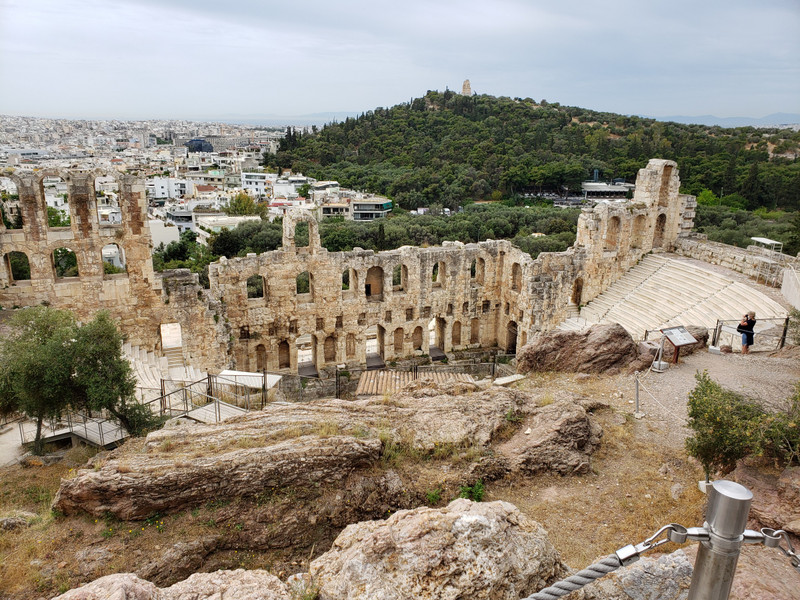From UNESCO: The Acropolis of Athens is the most striking ancient Greek still existing in our times. It is situated on a hill of average height (156m) that rises in the basin of Athens. Its overall dimensions are approximately 170 by 350m. The hill is rocky and steep on all sides except for the western side, and has an extensive, nearly flat top. Strong fortification walls have surrounded the summit of the Acropolis for more than 3,300 years. The first fortification wall was built during the 13th century BC, and surrounded the residence of the local Mycenaean ruler. In the 8th century BC, the Acropolis gradually acquired a religious character with the establishment of the cult of Athena, the citys patron goddess. The sanctuary reached its peak in the archaic period century to early 5th century BC). In the 5th century BC, the Athenians, empowered from their victory over the Persians, carried out an ambitious building programme under the leadership of the great statesman a large number of monuments including the Parthenon, the Erechtheion, the Propylaia and the temple of Athena Nike. The monuments were developed by an exceptional group of architects (such as
Iktinos, Kallikrates, Mnesikles) and sculptors (such as Pheidias, Alkamenes, Agorakritos), who transformed the rocky hill into a which heralded the emergence of classical Greek thought and art. On this hill were born Democracy, Philosophy, Theatre, Freedom of Expression and Speech, which provide to this day the intellectual and spiritual foundation for the contemporary world and its values. The Acropolis monuments, having survived for almost centuries through wars, explosions, bombardments, fires, earthquakes, sackings, interventions and alterations, have adapted to different uses and the civilizations, myths and religions that flourished in Greece through time.Perhaps some of you remember reading about this in World History or Western Civ. I actually took a Greek Classics class at Cal, since most of the majors used it to pad our grade point average!!! But it was very interesting. In fact, many years later, my ex took a class of Greek History, and since she was unable to write the final paper, I did it for her!!!I can see the Acropolis from my hotel. And just about every place in the city offers a view of the great monument. The ancient agora which to the untrained eye
looks looks like a jumble of rocks and broken pavement (to the trained eye as well) was once a vibrant neighborhood and part of the Plaka and Monastiraki. The American School of Classical studies came in the fifties and kicked everyone out of their houses and businesses and demolished the buildings that had stood there for centuries to dig here. So next time you are walking through the Plaka and thinking that you wish there was more of Athens like this, remember that there used to be and be thankful that they did not destroy it all. But to be fair it is archaeological excavations like the agora which give Athens much of its precious green space. Needless to say, the Acropolis is the finest and greatest sanctuary of ancient Greece. Athena must have been one great person! The Acropolis is the highest part of the city, and has been used continuously since Neolithic times. Earthquake damage in 1800 to 1803 resulted in removal of the sculptures, and were taken to England by Lord Elgin. But the Parthenon is the epitome of Greek classical art. No building is allowed to be taller than the Acropolis. The views were spectacular (Sidra), the entire process of climbing up to the Acropolis, paying 20 Euro, and marching through with other tourists seems almost pedestrian to its history. Rather than detail the entire history, I will let you google it. I am going to just take in all of the views, and try to picture myself as an ancient to the Acropolis to pay homage to my Athena. I would rather try to think of the famous people who walked on these steps before me.









